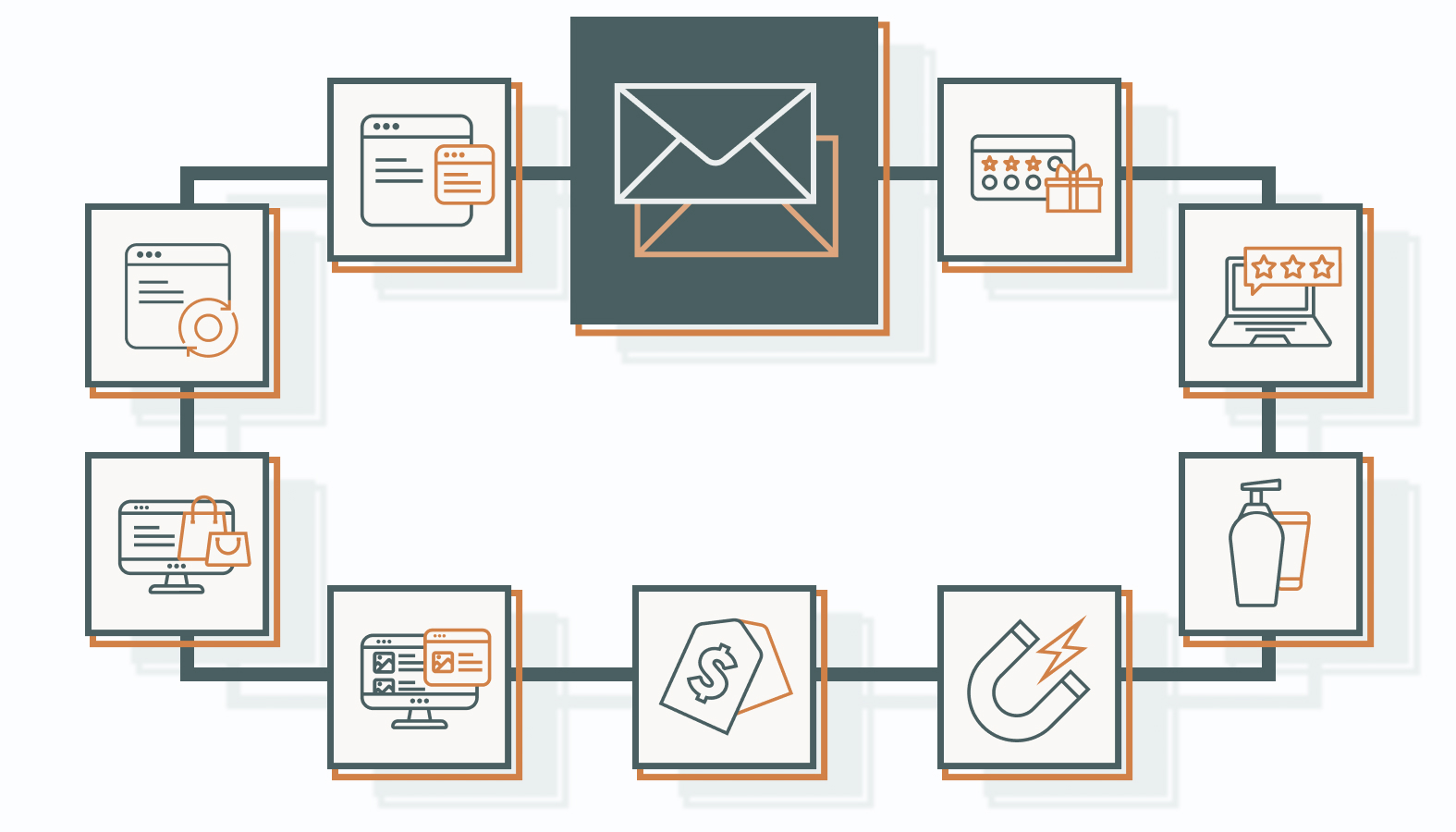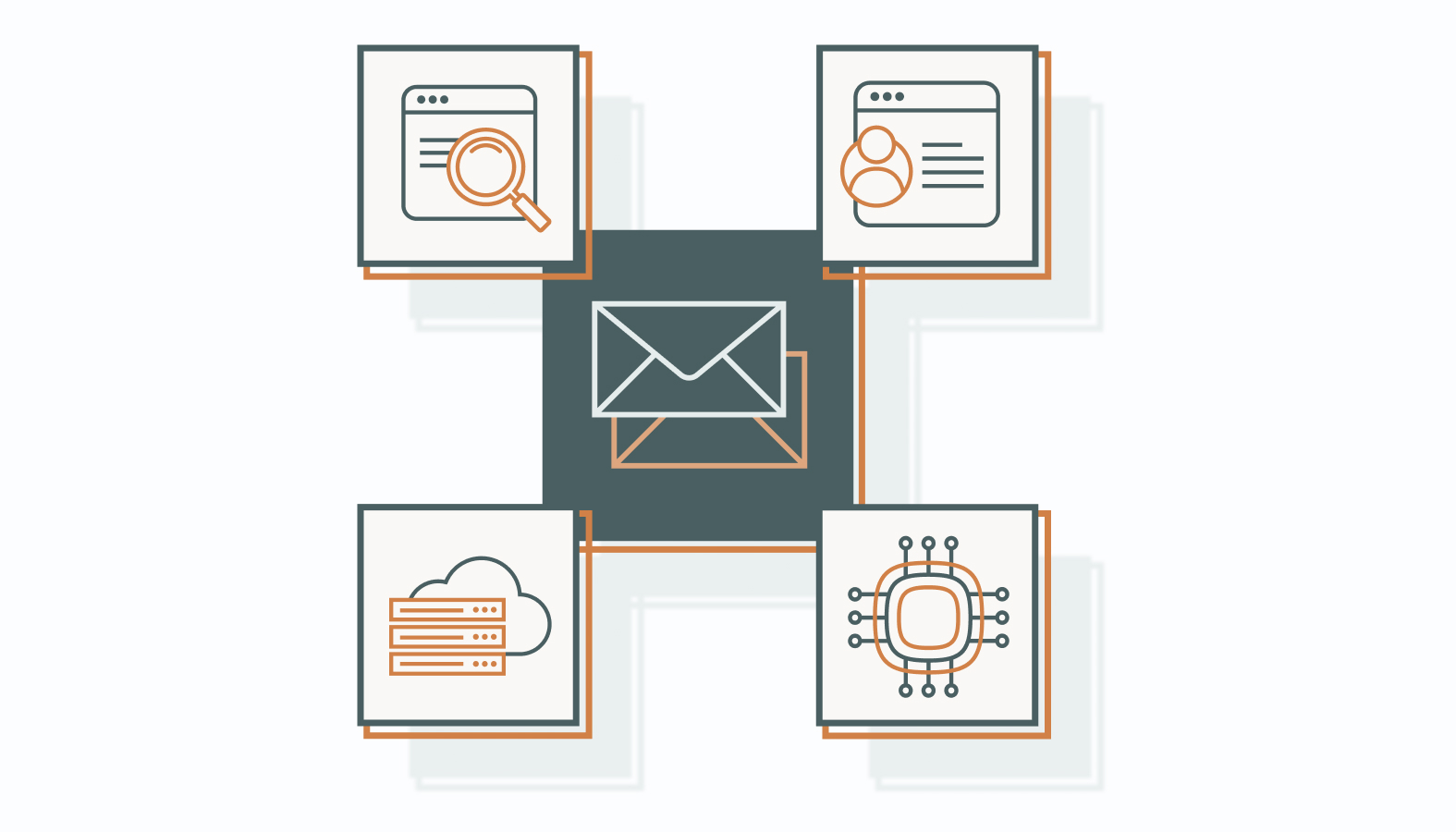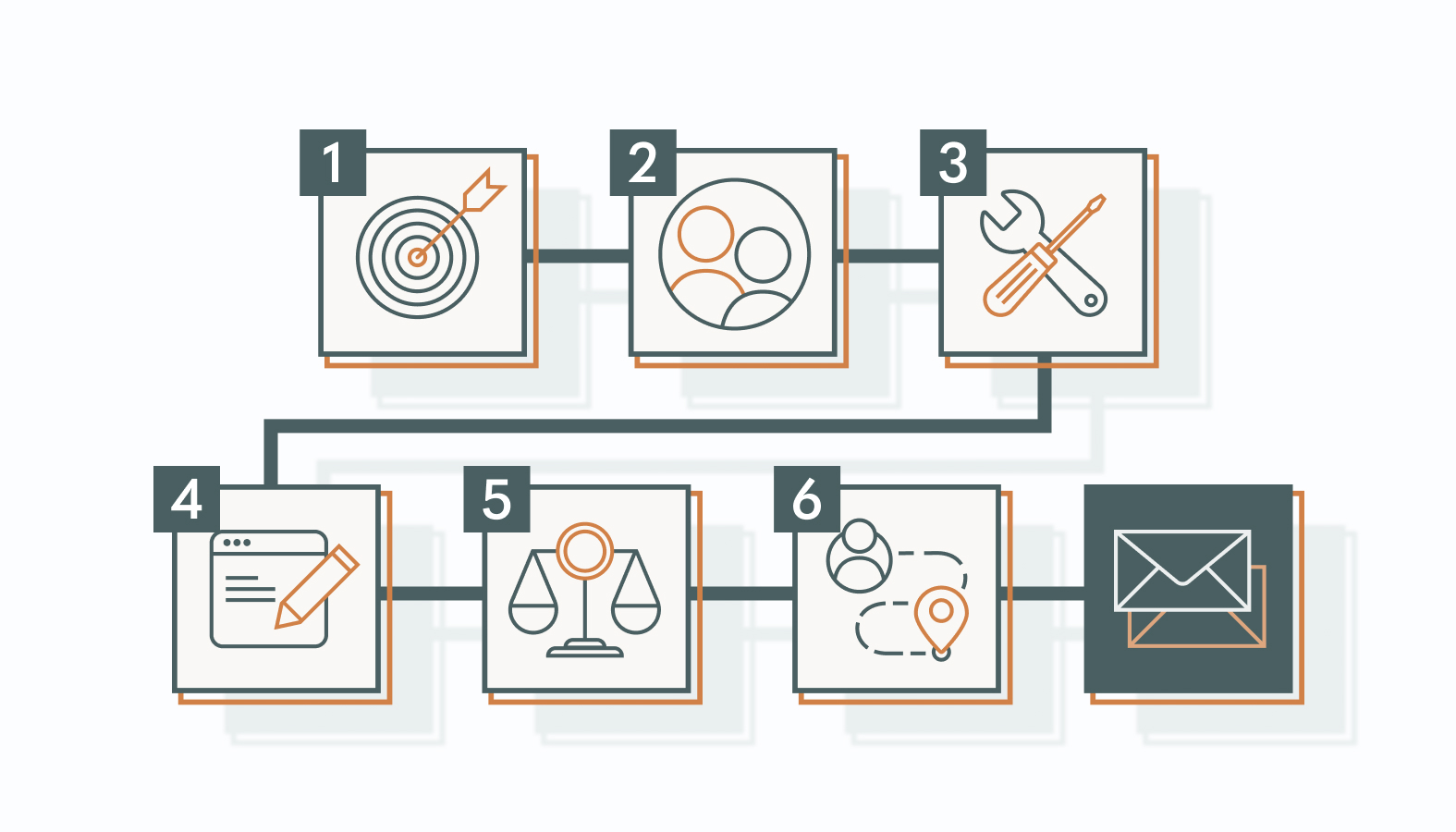Email marketing hasn’t lost its edge. It’s just evolved.
In the fast-moving world of ecommerce, what once drove clicks and conversions now risks being ignored. Gone are the days of batch-and-blast campaigns; today’s consumers expect emails that anticipate their needs, speak their language, and arrive at just the right moment.
The difference-maker? Smarter strategies powered by AI, real-time insights, and a sharp focus on personalization. If your emails still feel like they’re stuck in 2020, you’re likely missing the mark and the revenue.
This guide breaks down what’s working in 2025 (and what’s not), giving you a clear path to modern email marketing that actually drives results. It’s time to rewire your strategy and meet customer expectations head-on.
Why Ecommerce Email Marketing Today Looks Nothing Like It Did Five Years Ago
Ecommerce email marketing has evolved from simple, one-size-fits-all campaigns to highly personalized, data-driven strategies.
With advanced technology and AI at the helm, brands now have the tools to send messages tailored to individual behaviors and preferences.
This shift reflects broader changes in consumer expectations.
- Shoppers today expect timely, relevant content, and generic emails no longer meet those needs.
- Emails are no longer just messages in an inbox. They are critical touchpoints that nurture customer relationships and drive engagement.
As technology and privacy regulations evolve, brands must adapt to maintain relevance and build trust. The shift to smarter, more personalized email marketing isn’t temporary — it’s the future.
Staying competitive means embracing these changes now and moving beyond outdated strategies.
Outdated Ecommerce Email Tactics to Leave Behind
Before you can unlock the full potential of modern email marketing, you need to know what’s holding you back. It’s time to identify what no longer works, so you can build smarter campaigns that move the needle.
- Generic Email Blasts: Sending the same message to everyone no longer effective. Modern consumers demand messages that speak to their specific needs. Personalization is key. Sending one-size-fits-all emails often leads to low engagement and higher unsubscribe rates.
- Overused, Impersonal Discounts: Discounts were once a surefire way to grab attention, but blanket 10% off codes now feel like a dime a dozen. Today’s shoppers expect more than just a price cut. Tailor your offers based on customer behavior and preferences to deliver true value that resonates.
- Weak or Clickbait Subject Lines: Clickbait subject lines might boost open rates initially, but they quickly erode trust. Consumers are savvy and can spot hype from a mile away. Instead, focus on clear, compelling subject lines that deliver on their promise. Clarity and relevance win in 2025 and beyond.
- One-and-Done Welcome Emails: A single welcome email is a wasted opportunity. Your welcome sequence should be an engaging journey, not just a quick hello. A thoughtfully planned series that educates, engages, and encourages action will keep new subscribers interested and convert them into loyal customers.
- Neglecting Mobile Optimization: More than half of all emails are opened on mobile devices, so designing emails for desktop-only is a major misstep. Small CTAs, slow-loading visuals, and poor formatting can kill engagement. Mobile-first design is no longer optional.
- Holding Onto Inactive Subscribers: Focusing on numbers is tempting, but keeping disengaged subscribers hurts your deliverability. Cleaning up your list by removing inactive contacts ensures your emails reach the right audience and improve overall performance.
This is crucial, especially as data privacy laws like GDPR become stricter. Regular list cleaning, segmenting out inactive subscribers, and monitoring engagement positively impact deliverability and reduce costs.
- Using No-Reply Email Addresses: A no-reply email address sends a clear message: “We don’t want to hear from you.” In 2025, email is a two-way communication tool. Using a monitored, friendly address builds trust and encourages deeper engagement with your brand.
- Sending Emails With No Real Purpose: If your emails aren’t offering something valuable (like information, entertainment, or a helpful offer), they’re just noise. And consumers are quick to hit delete on noise. Every email needs to serve a specific, helpful purpose to stay relevant.
- Relying on Outdated Segmentation: Using static demographic-based segmentation is no longer enough to spark meaningful engagement. In 2025, you must segment your lists based on real-time behaviors and customer preferences.
- Ignoring Privacy and Consent Regulations: With rising consumer awareness and stricter regulations around data privacy, failing to respect privacy guidelines is a risk you can’t afford. Being transparent about data use, securing consent, and adhering to privacy laws isn’t just good practice; it’s a must.
Outdated tactics won’t help you stand out in today’s competitive landscape. The modern email marketer’s playbook requires agility, relevance, and a commitment to delivering value.
Next, the following strategies can help you stay ahead of the curve in a market that’s only getting more demanding.
Key Email Tactics for Ecommerce Growth
In the world of ecommerce, email marketing is more than just a tool — it’s an essential driver of revenue and customer loyalty.
From the moment a subscriber lands in your inbox to the moment they make their fifth purchase, email plays a key role in guiding customers through the entire journey.
Let’s explore these strategies in detail.
Crafting a Stellar First Impression with a Welcome Email Series
First impressions matter. A well-crafted welcome email does more than say, “Thanks for signing up.” It sets the stage for what’s to come.
This is your chance to introduce your brand, explain what customers can expect, and offer an incentive.
A discount or exclusive offer at this stage can catalyze that first purchase. Nail this, and you’ve got their attention. Miss it, and they might wander off before you even get started.
Transactional Emails: Building Trust Through Timely Email Updates
We’ve all received order confirmations and shipping updates, but those little nuggets of communication shouldn’t be overlooked.
These transactional emails need to be clear, concise, and reliable. They must confirm the actions customers took, whether they made a purchase, paid, or received a shipping notice.
Timeliness is key here; a delayed confirmation can damage trust. And let’s be real: if you want customers to keep returning, you must reinforce reliability and professionalism. Show them you’re on top of things by delivering important updates without delay.
Recovering Lost Sales with the Abandoned Cart Email
Ah, the dreaded cart abandonment. It’s the ecommerce equivalent of a missed opportunity.
But don’t despair — these emails are invaluable for nudging customers back toward completing their purchases.
Remind customers of what they left behind, perhaps with a special offer or discount to sweeten the deal. Paint the picture of what they’ll miss out on, and suddenly, that abandoned cart doesn’t seem so abandoned anymore.
Automating triggered email sequences, like abandoned cart reminders, enhances customer engagement without additional resources.
Staying Top of Mind with a Consistent Newsletter Strategy
Consistency is king. A regular newsletter isn’t just about pushing products — it’s about maintaining an ongoing dialogue with your subscribers.
Mix up content types: updates, educational content, and exclusive offers all have a place. The goal is to stay at the top of customers’ minds without being overbearing.
Find the right balance in frequency, and you’ll see open rates that feel just right.
Driving Conversions with Promotional Emails
Everyone loves a deal, especially when it feels personal.
The best promotional emails leverage customer data to deliver relevant, tailored offers. Segment your audience, target specific needs, and then craft your messaging to speak directly to them.
Flash sales, seasonal discounts, and exclusive previews are all powerful ways to create urgency and exclusivity. Done right, these promotional emails convert effectively.
Winning Back Silent Customers through Re-engagement Emails
We’ve all been there: the customer who once loved you… then went silent.
Re-engagement emails are your second shot. Find those dormant subscribers and give them a reason to return — be it through feedback requests or irresistible offers.
Timing matters with re-engagement. Send it too soon, and you’ll seem pushy. Do it too late, and they’ll have already forgotten why they signed up in the first place.
Strategic timing and messaging successfully win back customers who have drifted away.
Anticipating Needs with Product Recommendation Emails
Think of these emails as your personal shopping assistant.
By using customer purchase history or browsing behavior, you can suggest products they might actually want or need.
These emails make shopping easier, and when done well, they increase repeat purchases. Going deeper into hyper-targeted campaigns, you can suggest products based on individual preferences, browsing behavior, and purchase history, significantly impacting conversion rates.
Turning Purchases into Praise: Review Request Emails
Here’s a simple truth: reviews matter. And timing your requests properly is crucial.
Wait too long, and the excitement of the purchase may fade.
But send it at just the right moment, and you might get a glowing review.
Simplify the review process with direct links to the review page, clear instructions, and a simple rating system, and you will increase your chances of getting that coveted feedback.
Cultivating Long-Term Loyalty with VIP Program Emails
Loyalty is earned, not given. Loyalty program emails aren’t just about rewarding customers, they’re about making them feel special.
Offer exclusive perks, early access to sales, or members-only deals, and you’ll nurture long-term relationships. In the ecommerce world, loyalty translates directly to repeat purchases, and those are far more valuable than one-time buyers.
Each of these emails plays a critical role in the lifecycle of an ecommerce customer. Get them right, and you’ll guide your customers along their journey and build long-lasting relationships that turn casual shoppers into diehard brand advocates.
Modern Approaches to Ecommerce Email Marketing
Ecommerce email marketing has come a long way from sending generic, one-size-fits-all blasts to a mass list.
For 2025 and beyond, personalization, real-time engagement, and hyper-targeted strategies are clearly taking center stage.
Consumers today want more than just inbox clutter — they want value delivered right when needed. If your approach still relies on outdated tactics, it’s time to rethink and step up your game.
Email List Hygiene and Segmentation
Maintaining a healthy email list ensures your campaigns reach the right people.
- Regularly removing inactive subscribers and hard bounces improves deliverability, maintains a strong sender reputation, and saves money by focusing your budget on subscribers more likely to convert.
- Segment your list by engagement levels for more relevant content. Target your most engaged subscribers with frequent, personalized emails. For semi-engaged users, deploy re-engagement campaigns that include new offers or fresh content. This targeted approach keeps your list warm and your engagement rates strong.
By refining your list and segmentation strategy, you’re laying the groundwork for even more advanced personalization.
From Static Campaigns to Predictive Personalization
The shift that’s shaking up ecommerce email marketing? Relevance.
Today’s emails aren’t just messages but tailored experiences crafted around individual customer behavior, preferences, and timing.
AI is the driving force behind this transformation, handling what once took days of work in mere seconds. Machine learning models now analyze everything from browsing history to past purchases, allowing you to predict what a customer is likely to buy next and when they’re most likely to buy it.
Predictive analytics are now your best friend. They highlight the customers most likely to make repeat purchases, helping you nudge them at the right moment with the right message.
And with dynamic content tools, you can change the email experience based on where a customer is in their journey. Whether it’s their first purchase or their fifteenth, you can craft an email that speaks directly to their needs at that precise moment. Dynamic content enhances personalization by changing visuals, offers, or product recommendations based on customer data.
Trust Is the New Currency
As personalization has grown more sophisticated, so has the need for transparency. Privacy regulations like GDPR, CCPA, and evolving first-party data practices have made it clear that trust isn’t optional — it’s a requirement.
Winning brands communicate how customer data is collected, stored, and used. They provide clear opt-in choices, easy unsubscribe options, and frictionless access to account preferences. Email security measures like encryption and verified sender domains are no longer “nice to haves”—they’re table stakes for building long-term loyalty.
Next-Gen Email Tactics to Stay Ahead
Smart brands are no longer sticking to the basics; they’re getting more creative and strategic with email campaigns.
- Predictive Personalization: AI takes personalization to the next level by anticipating customer needs. By analyzing past behaviors, AI can suggest products with incredible accuracy, whether new arrivals, complementary items, or time-sensitive bundles.
For example, if a customer frequently purchases skincare products, your emails will serve precisely what they’re likely to love, making their shopping experience more relevant and engaging.
While predictive personalization anticipates customer needs, automation ensures those insights are acted upon quickly and efficiently.
- AI-Driven Automation: Email marketing automation has come a long way from basic scheduling.
Today, AI powers behavior-driven triggers that streamline communication. It can automate processes like product recommendations, restock alerts, re-engagement campaigns, and post-purchase follow-ups — each tailored to your customers’ actions.
The result is increased efficiency, timely responses, and higher conversion rates, all with minimal manual effort.
- Behavioral Trigger Emails: These emails are designed to respond in real-time to customer actions. Whether it’s cart abandonment, category browsing, or engagement with a product, they give you a chance to reach out when the customer is already primed for action. The key? Make sure your triggers feel helpful, not robotic.
- Email + Social Integration: The lines between channels are getting blurrier. Add social sharing buttons to your emails, use social media insights to personalize messages, and tie in social campaigns to amplify your reach. The more integrated your approach, the more effective your results.
Using social data can inform email decisions and make emails more relevant, showcasing the growing integration between email and social media.
- Offline and In-Store Sync: Even if you’re an online-only brand, the digital and physical worlds blend. Use email to drive foot traffic to pop-ups, promote QR-code-based in-store discounts, or notify loyalty members about local events. Consistency in messaging is key, whether your customer interacts with you online or offline.
- Interactive Email Marketing: Incorporating elements like carousels, surveys, or product selectors enhances engagement. AMP technology enables dynamic experiences directly within emails, boosting customer engagement.
By embracing these next-gen strategies, you’re setting the standard. The future of ecommerce email marketing is all about personalization, automation, and integration, and those who adapt will be the ones who lead the charge. Stay ahead of the curve and make every email count.
How to Build a Winning Ecommerce Email Strategy
Now that you know what strategies work and which ones to avoid, it’s time to move from theory to execution and build a solid plan.
An effective ecommerce email strategy should be strategic, impactful, and measurable to drive sales, build lasting relationships, and keep your customers coming back for more.
Step 1: Set Clear Goals for Your Email Campaigns
Before you hit send, define your objectives.
Setting SMART goals (Specific, Measurable, Achievable, Relevant, Time-bound) is the foundation of any successful email campaign.
Whether you’re aiming to boost retention, increase conversions, or drive awareness for a new product, clear goals guide your approach and provide benchmarks for success.
These targets should inform every email you send, ensuring each serves a specific purpose and helps move the needle.
Step 2: Know Your Customers to Enhance Engagement
Email marketing isn’t one-size-fits-all. Understanding your audience allows you to create personalized experiences that resonate.
Segment your email list based on demographics, behaviors, and preferences, and dive into analytics to uncover patterns in purchasing habits.
This enables you to deliver relevant and timely tailored content, strengthening your connection with customers and boosting engagement.
Step 3: Choose the Best Tools and Technologies for Email Marketing
The right tools can make or break your email marketing efforts.
Select a platform that aligns with your needs, whether advanced automation, AI-powered analytics, or seamless integrations.
The best tools will streamline your processes and help you deliver the most effective, personalized campaigns at the optimal time. With the right tech stack in place, you’re set up to maximize your results.
Step 4: Create Content That Captivates and Converts
Content is king. Your subject lines need to grab attention, and your email body should compel action.
A/B testing focuses on elements, such as CTAs, images, and copy, to determine what works best for your audience.
Fine-tuning this process means each email you send will be more engaging and impactful than the last, pushing your customers closer to conversion.
Step 5: Ensure Your Emails Meet Legal Standards and Industry Best Practices
Compliance with laws like GDPR, CAN-SPAM, and CCPA is essential, but it’s not just about avoiding penalties. It’s about building trust.
Ensure your emails include explicit consent, easy opt-out options, and transparent data practices.
Adhering to these standards protects your business and enhances the customer experience, fostering loyalty and credibility.
Email authentication protocols like DKIM, SPF, and DMARC ensure emails reach inboxes and avoid spam filters. Maintaining a positive sender reputation is also key for deliverability.
Step 6: Map Emails to the Customer Journey
Before you can run high-impact email campaigns, you need to understand where your customers are in their journey and meet them there.
Great email marketing isn’t just about blasting discounts. It’s about strategically guiding subscribers through each stage of the funnel with timely, relevant messaging.
- Top-of-Funnel (Awareness): Early-stage subscribers are still exploring. Focus on value-first content like helpful guides, how-to resources, or industry insights. The goal is to build trust and position your brand as a credible authority.
- Middle-of-Funnel (Consideration): Now that your audience is interested, it’s time to nurture that momentum. Send emails highlighting product comparisons, social proof, testimonials, or case studies to reinforce your value and differentiate your offerings.
- Bottom-of-Funnel (Conversion): This is where you prompt action. Use emails like abandoned cart reminders, limited-time offers, or personalized product recommendations to encourage purchase decisions and drive conversions.
The key? Every email should serve a clear purpose based on where your customer is in their lifecycle. When your messaging aligns with intent, engagement and revenue go up.
By following these steps and staying focused on strategy, ecommerce businesses can build email campaigns that drive real results. Proper planning and the correct tools turn email marketing from a basic task into a growth engine that keeps your customers engaged, loyal, and ready to buy again.
Future-Proof Your Ecommerce Email Marketing
In the fast-evolving world of ecommerce, email marketing success is about staying adaptable and optimizing continuously.
While adhering to regulations like GDPR, CAN-SPAM, and CCPA is crucial for protecting your business and fostering trust, future-proofing your email strategy requires a proactive, long-term approach.
- It’s about building a marketing engine that can evolve with shifting consumer preferences, technological advances, and industry changes.
- Regularly reviewing and refining your campaigns by analyzing key metrics like open rates, click-through rates, and conversions ensures that your strategy remains relevant.
- By leveraging customer insights and data-driven decisions, you’ll stay ahead of the competition and continue to build stronger relationships with your audience.
- Interpreting email metrics and using data to refine strategies is essential. If certain subject lines consistently result in higher open rates, focus on replicating those patterns.
Commit to continuous optimization, adapt to emerging trends, and invest in tools that keep you flexible and prepared for what’s next.
Testing is an ongoing process. Experiment with visuals, copy, frequency, and timing to discover what resonates. Stay informed about trends through resources, courses, and certifications.
This mindset secures your brand’s position today and sets you up for sustained success in the future, positioning you as a leader in customer engagement and innovation.
Ready to Amplify Your Email Strategy?
The potential for growth in ecommerce email marketing is limitless, especially when your strategy is built on the correct principles. Now that you’ve learned how to craft compelling, compliant campaigns, it’s time to turn that knowledge into action.
If you’re ready to elevate your email marketing strategy, we’re here to guide you. Our team of experts is prepared to help you optimize campaigns, drive engagement, and deliver results that matter to your business.
Schedule a candid conversation with one of our experts today, and let’s explore the powerful impact of personalized, data-driven email marketing. No pressure; just an open discussion about your goals, the path ahead, and how we can tailor a strategy that’s as unique as your brand.










